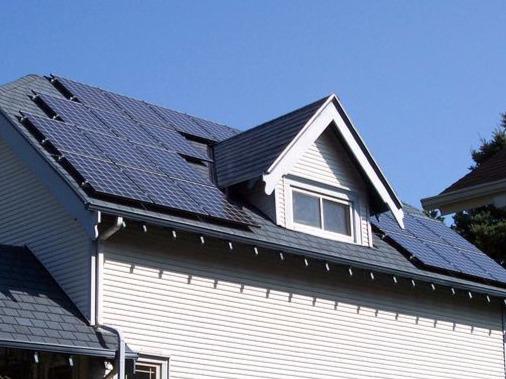






2. Pellets 8mm
3. 6-8 mm DIN+ Quality Pellets
4. We manufacture and sell fuel pellets from straw to European countries
5. Sell wood pellets
6. Wood pellet manufacturing
7. Sunflower Husk Pellets
8. Din Plus Wood Pellets
9. Export of sunflower husk pellets to the European market
10. Export of sunflower husk pellets to the European market
Innovative Digital Solar scheme in Australia
Tue-14-2016
In the last decade, solar power adoption in Australia has greatly soared, making solar power the most popular source of renewable energy*. Around 15% of all Australian homes have rooftop solar panels installed, but the difference in figures between rental properties and owner-occupied properties is huge.
Digital Solar scheme for rental homes
Reports say that 1% of the rental property market has solar PV panels installed, but thanks to Melbourne-based tech startup Matter, things are about to change.
Today, Australia’s 2 million rental homes are getting access to more affordable solar energy under an innovative Digital Solar scheme which enables landlords to make money while their tenants’ savings increase.
The scheme divides the savings between homeowners and their tenants. Similar PPAs (Power Purchase Agreements) have been rolled out throughout the US with great success, enabling a larger portion of the residential market to access renewable energy technology. The way Digital Solar works is as a broker that initiates deals between landlords and their renters. The property owner pays for the solar panel installation and then sells the power to the tenant at a cheaper rate than electricity from the national grid.
Generally, this arrangement saves tenants about $300 each year on their electricity bill, while the landlord makes an average of $1500 annually in profits — with solar installation costs fully covered within 4–6 years.
Clearly, this is an untapped market with massive potential, considering that only 1% of Aussie rental homes have solar panels installed.
Rentals aren't going to turn solar into a revenue stream
So why are rentals not turning solar into a revenue stream? The answer is that it has never been profitable for homeowners to invest in solar panels just so their renters can enjoy the benefits. This is a widespread problem in many countries, including the UK, the US, Japan and of course Australia.
“The problem has always been that if you’re a tenant you don’t want to pay to put solar on someone else’s roof, while as a landlord you don’t want to pay for solar panels when you’re just giving the tenant free power,” says Simon Barnes, Matter co-founder.
This is where Matter comes in – it plans to make the system profitable for homeowners to install solar systems through the Digital Solar solution. Part service, part gadget, Digital Solar enables landlords to correctly meter the amount of solar energy tenants are using and then run their solar PVs like a micro-utility. No doubt, there are rental houses with solar systems installed already, even though such are a rarity.
The major problem with Digital Solar’s solution is that there are no existing standard procedures for either landlords or renters in solar-equipped properties. For example, some landlords may benefit from solar feed-in tariffs and still pass the entire cost of electricity bill to the tenant. Again, others may deduct all or some of the FIT from the power bill. Still, others may charge exorbitant rent and still pass all savings on to their tenant. In either situation, the landlord will generate only a trickle of profit from their utility, which is initially very costly to set up.
Solar panels are the most important now
In the era of climate change, the use of clean energy is more important than ever before. By making it profitable for landlords to install solar panels on their investment properties, Matter hopes to increase the number of solar systems installed on rooftops of rental properties across Australia.
This system allows landlords to manage their solar panels as a ‘mini utility’. It monitors rooftop solar installations through small wireless smart meters made to work with any solar equipment brand (in-home batteries included), and the electricity provider.
Matter’s main objective is not to make Australian homes fully self-sufficient, but rather reduce their reliance on the expensive power grid. This solution is underpinned by Matter’s platform called Hana, which analyses the elements of each property, calculates the size of the solar panel and the expected savings as well as monitoring the system’s performance.
The Digital Solar system will be built on Matter’s existing software, which is used by water and electricity providers in thousands of Australian homes. This system is powerful enough to handle complex tariffs, including the feed-in tariff when electricity is exported back to the grid.
Digital Solar smart monitors for everyone
The company simply acts as a broker to help its customers get a good deal on solar installation and does not retail solar panels or inverters. It makes arrangements for solar installation even on homes with pre-existing systems, and offers hands-on support to clients throughout the process.
The Digital Solar smart monitors can also be installed with new solar systems or retro-fitted to the existing solar power systems. The Digital Solar device accurately tracks renters’ use of solar-generated power and automatically bills them at a reasonable rate agreed upon by the two parties.
Digital Solar scheme has benefits for both sides
This scheme is beneficial to both tenants and landlords, with Matter claiming that by slashing power bills for tenants, earnings for landlords will in fact increase. This guarantees an attractive return on investment in solar within the first 5–6 years.
“It costs 8.5 cents per kilowatt hour to install rooftop solar, while in Australia your average grid electricity charge is about 24 cents,” says Barnes, the co-founder of Matter.
“We exploit that difference so the tenant gets cheaper clean power, while the landlord recovers expenses and gains a new income stream.”
Landlords will pay $9 per property, as a monthly subscription fee to have access to Digital Solar. On the other end, tenants will only pay for the power they consume from the solar system and the grid — there are no out-of-pocket costs charged to the tenant.
One disadvantaged party in this arrangement will be tenants in homes that have already installed solar panels.
According to Australian tenancy laws, landlords should not charge more for utilities than what the relevant authority charges, and in the event of on-site generated solar, they must not charge more than what the local retailer offers. In this regard, Digital Solar suggests both parties agreeing on a 20% discount off the price paid on their grid-supplied electricity.
Obviously, most solar panels don’t generate enough energy to power all the household applications, and therefore, the excess energy required will be supplied by the grid and be billed as usual.
In the fall of this year, Matter plans to roll out a multi-tenant scheme which aims to offer support to apartment blocks, a practical move that will ensure another 400,000 homes across the country are installed with solar panels.
Indeed, Digital Solar is a win-win situation for tenants and landlords, but especially for tenants who’ve never made the most of solar energy. With this service, they can now accurately measure their electricity usage in real time — seeing how much is charged each day or on an hour’s use and allowing them to manage their power usage properly.
For property owners, Digital Solar is proving to be a pretty safe bet in terms of investment since they will make money out of it as long as the sun keeps shining.
Source: http://ukrfuel.com/news-Innovative Digital Solar scheme in Australia-108.html
Any copying and distributing withoutactive hyperlink is strictly prohibited!
Views: 1439
 Stobart biomass division is to make a deal
Stobart biomass division is to make a deal
Biomass Related News
- Mason-based Agro BioFuels and BioEnergy Inc. will employ 25 to 30 people and drive another 75 to 100 jobs
- 40000 solar panels are to be installed in Wales
- Refining biomass in Italy
- New revolutionary research in solar energy
- Stobart biomass division is to make a deal
- Helping businesses and organisations
- Facilities of the municipality of Kiihtelysvaara, Finland heated by wood pellets
- Burning wood biomass: an opportunity or a problem?
- The multipurpose bioenergy plant in Skelleftea, Sweden
- Cochran Ltd. and Scot Heat & Power Ltd. cooperate on bioenergy for industrial market
|
© Ukrainian Biofuel Suppliers 2008-2024 |
